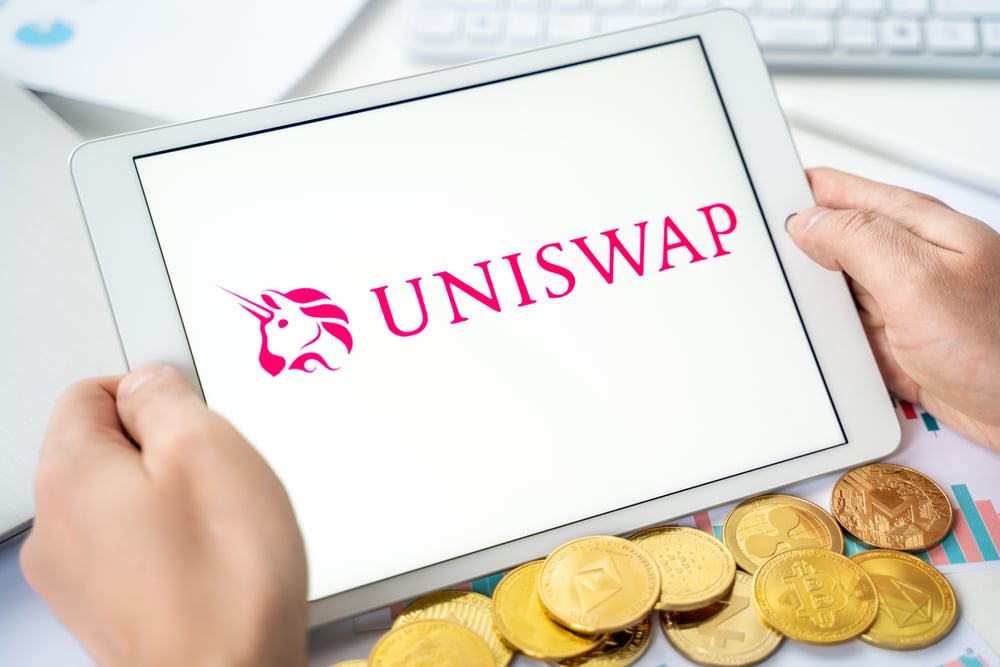Uniswap has emerged as a game-changer in cryptocurrencies, remarkably decentralized finance (DeFi). Built on the Ethereum blockchain, this decentralized exchange has carved a niche by solving many issues overrunning traditional and even some decentralized exchanges. This comprehensive guide aims to give you a deeper understanding of what makes Uniswap unique, how it works, and its unique features.
The Basics: What is Uniswap?
Uniswap is a decentralized exchange that automates the trading of Ethereum-based tokens (ERC-20). Unlike traditional exchanges that rely on an order book to match buyers and sellers, Uniswap uses a liquidity pool and a specific algorithm to facilitate transactions. Created by Hayden Adams in November 2018, Uniswap aims to provide a seamless trading experience without intermediaries.
How Does It Work?
Uniswap uses a unique model called the Constant Product Market Maker, a variant of Automated Market Makers (AMMs), to facilitate decentralized trading. The core of this model is liquidity pools, where pairs of tokens are stored. To become a liquidity provider, anyone can deposit an equal value of two tokens, like ETH and DAI.
The total liquidity in a pool is calculated using the formula x∗y=k, where x and y are the amounts of each token, and k is a constant. When a trade happens, such as buying 1 ETH for 1600 DAI, x decreases and y increases, but k stays the same. This change shifts the exchange rate, increasing the price of ETH relative to DAI.
Trading fees are distributed to liquidity providers, incentivizing more pool users to contribute. These providers receive liquidity tokens representing their share of the pool. This self-balancing system makes Uniswap a transparent and decentralized alternative to traditional exchanges.
The Innovative Design of Uniswap
Uniswap distinguishes itself in the crowded cryptocurrency exchange landscape through its decentralized, user-focused model. Unlike centralized exchanges that act as middlemen by facilitating trades and collecting fees, Uniswap is a decentralized protocol that allows for direct peer-to-peer transactions.
Its revenue distribution model is remarkable; the platform doesn’t charge fees. Instead, all fees are channeled to the liquidity providers who supply the assets to the trading pools. This 0.3% fee per transaction incentivizes more users to provide liquidity, creating a more robust and decentralized ecosystem.
The protocol’s architecture is highly democratic, as it distributes trading fees based on each liquidity provider’s proportional share in the pool. This encourages greater participation and offers a decentralized financial model that benefits the community rather than a centralized entity.
While Uniswap does not allocate any portion of these fees for its development, the possibility remains open for future versions. With its ongoing development, as seen in the launch of Uniswap v2 and the active work on Uniswap v3, the platform continues to push the boundaries of what’s possible in decentralized finance (DeFi).
Getting Started with Uniswap
To begin your journey with Uniswap, the first step is to have an ERC-20 compatible wallet like MetaMask, WalletConnect, Coinbase wallet, Portis, or Fortmatic. These wallets serve as your entry point to the Ethereum network, enabling you to engage with decentralized platforms such as Uniswap. Once your wallet is up and running, the following key action is to fund it with Ether (ETH). Ether is essential for two reasons: firstly, it’s one of the base currencies used for trading pairs on Uniswap, and secondly, you’ll need it to cover gas fees for your transactions.
Gas fees are transaction costs incurred on the Ethereum network. They are paid to miners for validating and processing transactions, and their price varies depending on network congestion. When initiating a transaction, most ERC-20 wallets offer three options for gas fees: slow, medium, and fast. The ‘slow’ option is the most economical but may take longer to process. The ‘fast’ option gets your transaction processed quickly but is more expensive, while the ‘medium’ choice offers a balanced trade-off between speed and cost.
Once your wallet is set up and funded, you can navigate to the Uniswap interface and start swapping tokens, providing liquidity, or participating in yield farming activities. Remember always to exercise caution and only trade assets you are familiar with.
Conclusion
Uniswap has redefined the landscape of decentralized exchanges with its automated liquidity provision and user-centric features. Its UNI token allows users to share in the platform’s success and promises to be a versatile asset in the broader Ethereum ecosystem. With ongoing developments like Uniswap V3, it’s clear that this platform is one to watch in the ever-evolving crypto world.
At Tokenhell, we help over 5,000 crypto companies amplify their content reach—and you can join them! For inquiries, reach out to us at info@tokenhell.com. Please remember, cryptocurrencies are highly volatile assets. Always conduct thorough research before making any investment decisions. Some content on this website, including posts under Crypto Cable, Sponsored Articles, and Press Releases, is provided by guest contributors or paid sponsors. The views expressed in these posts do not necessarily represent the opinions of Tokenhell. We are not responsible for the accuracy, quality, or reliability of any third-party content, advertisements, products, or banners featured on this site. For more details, please review our full terms and conditions / disclaimer.
